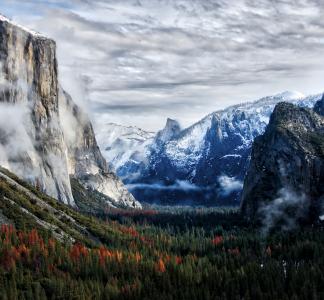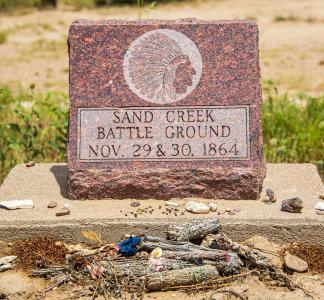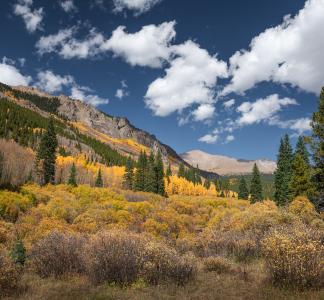Historic push underway to remove Confederate President Jefferson Davis’ name from Montana landmarks
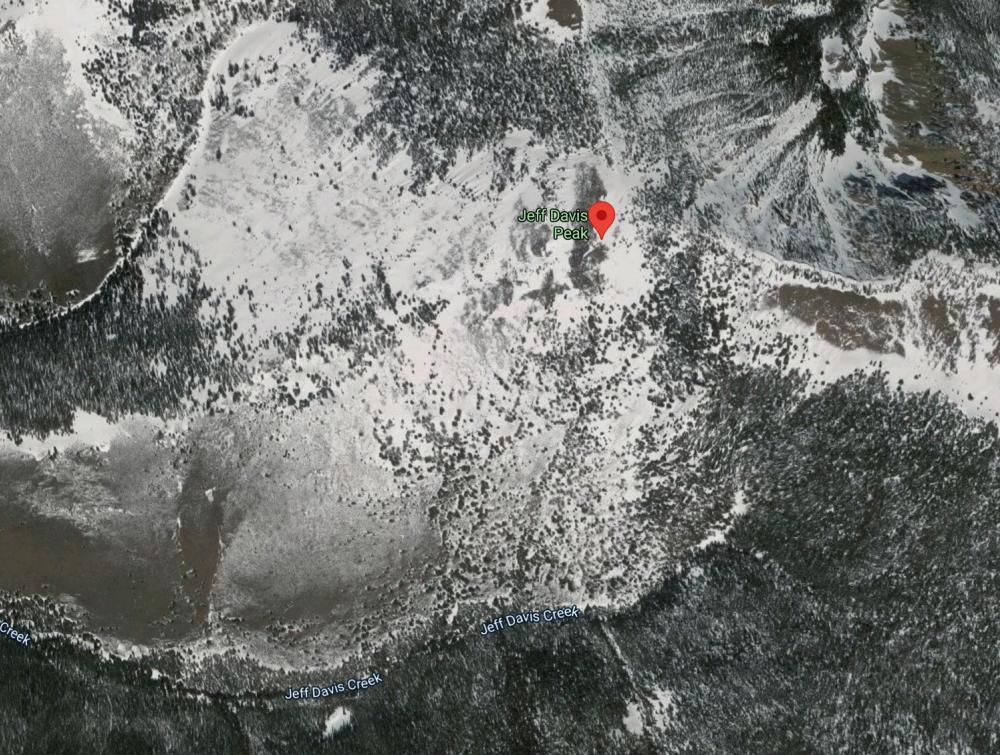
Google Maps view of Jeff Davis Peak and Jeff Davis Creek, Montana
©2021 Google, Maxar Technologies, USDA Farm Service Agency
New names would honor Salish people, Chinese immigrants
Exactly 156 years to the day since the capture of Confederate President Jefferson Davis by the United States, the Confederated Salish and Kootenai Tribes led an official push to remove the blight of his name from three geographic features in the state of Montana.
A petition submitted to the U.S. Board of Geographic Names on May 10 asked that Jeff Davis Peak, Jeff Davis Creek and Davis Gulch be renamed “Three Eagles Peak,” “Choos-wee Creek” and “In-qu-qu-leet Gulch”, respectively. The names were chosen to honor the Indigenous inhabitants of Montana and Chinese immigrants whose contributions to the state have been largely ignored.
Proposed names for Montana geographic features:
-
Three Eagles Peak: “Jeff Davis Peak” would be renamed in honor of a Salish chief whose title is translated as “Three Eagles.” Three Eagles is best known for meeting Lewis and Clark in 1805 and receiving the explorers with customary warm Salish hospitality
-
Choos-wee Creek: A new name for “Jeff Davis Creek” would honor the little-mentioned role of Chinese immigrants in the 19th century Montana mining boom while providing a reminder of the prejudice and mistreatment they often experienced (in a notable 1898 incident, a Butte miners’ association claimed to fight “the lowering Asiatic standards of living and morals” with a boycott of Chinese and Japanese businesses). The name is derived from a phonetic spelling of the Salish word for Chinese people.
-
In-qu-qu-leet Gulch: “Jeff Davis Gulch” would be replaced by this phonetic approximation of the Salish word for “Place of Lodgepole Pine.” Lodgepole pine, which are abundant in the area, hold deep practical and cultural importance for the Salish and Kalispel people.
Tools & Resources
Among figures associated with the Confederacy, Davis is second only to Robert E. Lee in infamy. He defended slavery and bigotry throughout his life and led the secessionist southern states in a war that claimed hundreds of thousands of lives. In addition to the Confederated Salish and Kootenai Tribes, the re-naming petition was submitted by the Mai Wah Society (a Butte-based Asian heritage organization), The Montana Racial Equity Project, Forward Montana Foundation, Montana Wilderness Association, Montana Human Rights Network and The Wilderness Society.
“It’s time we use names for our mountains, forests and rivers that reflect our state’s true history and ensure that all people are included and welcomed on our public lands,” said Paul Spitler, Montana-based director of wilderness policy at The Wilderness Society, in a joint statement.
Many places still named for Davis, other problematic figures
On May 10, 1865, Davis was captured in Georgia. That moment further cemented the defeat of the secessionist South that had been all but decided about a month prior with the surrender of Lee at Appomattox. Benjamin Brown French, a commissioner of public buildings based in Washington, DC, may as well have been speaking for historical posterity when he said, upon seeing headlines about Davis’ capture,“Thank God we have got the arch traitor at last.”
Upon Jefferson Davis’ capture, one public figure said “Thank God we have got the arch traitor at last.” But numerous monuments and public places still carry his name.
Dishearteningly, a 2019 analysis by the Southern Poverty Law Center found 152 monuments and place names in the U.S. still honoring Davis, including 11 schools. In addition to Davis, there are close to 2,000 monuments, parks, schools and geographic features honoring the Confederacy and its most prominent leaders. And far from being regrettable 19th century relics, many or most were established in the 20th century as a way of pushing back against the civil rights and anti-racism movements, emphasizing the modern relevance of such issues.
While most public places named after Confederate leaders are in the Southeast, there remain several notable examples in other parts of the U.S. In 2019, “Jeff Davis Peak” in Nevada’s Great Basin National Park was renamed Doso Doyabi. In 2020 a mountain with the same name near Lake Tahoe was renamed Da-ek Dow Go-et. Those new names were proposed by Yomba Shoshone, Pyramid Lake Paiute, and Reno Sparks Indian Colony leaders and the Hung-A-Lel-Ti Woodfords Washoe Tribe, respectively.
Numerous parks, public lands and other places still bear either racial slurs or the names of Confederate soldiers, racists and frontier figures responsible for killing or dispossessing Indigenous people. The work of renaming and rethinking these places has scarcely begun. Together with lawmakers, we hope to bring about a future when parks and public lands are fully inclusive--not only in the policies and culture that govern who gets to enjoy them, but in who or what they honor.
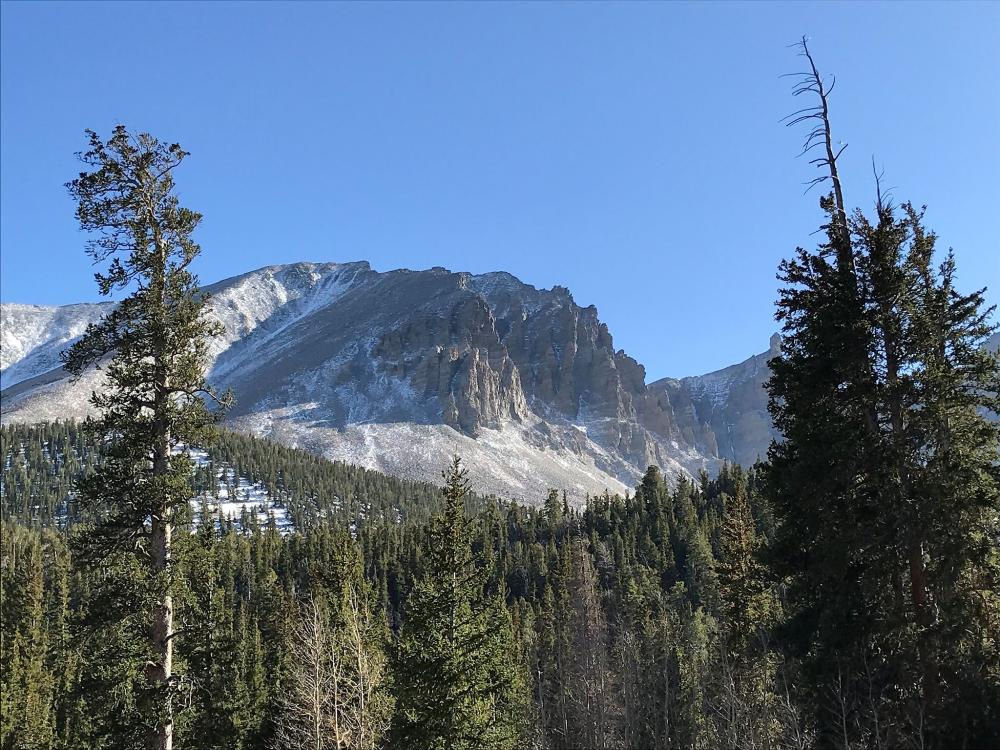
Doso Doyabi, formerly known as "Jeff Davis Peak," in Great Basin National Park, Nevada
Sue Frechette and Doug Shick, Flickr
Why we must teach the ugly side of public lands history + a tool to help
Howard Ignatius/Flickr
It’s time to own up to the racism and violence embedded in the names of parks and public lands
Kent Kanouse, Flickr
Cheyenne and Arapaho Tribes call to rename Colorado’s Mt. Evans and reckon with its namesake’s violent legacy
Mason Cummings
